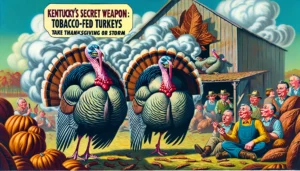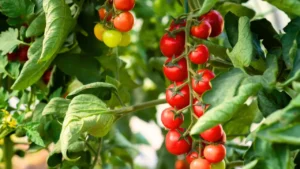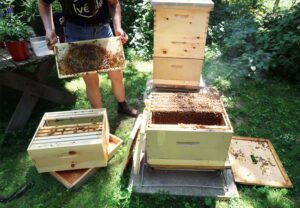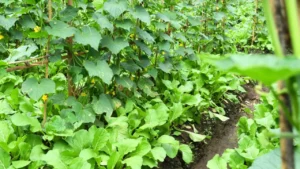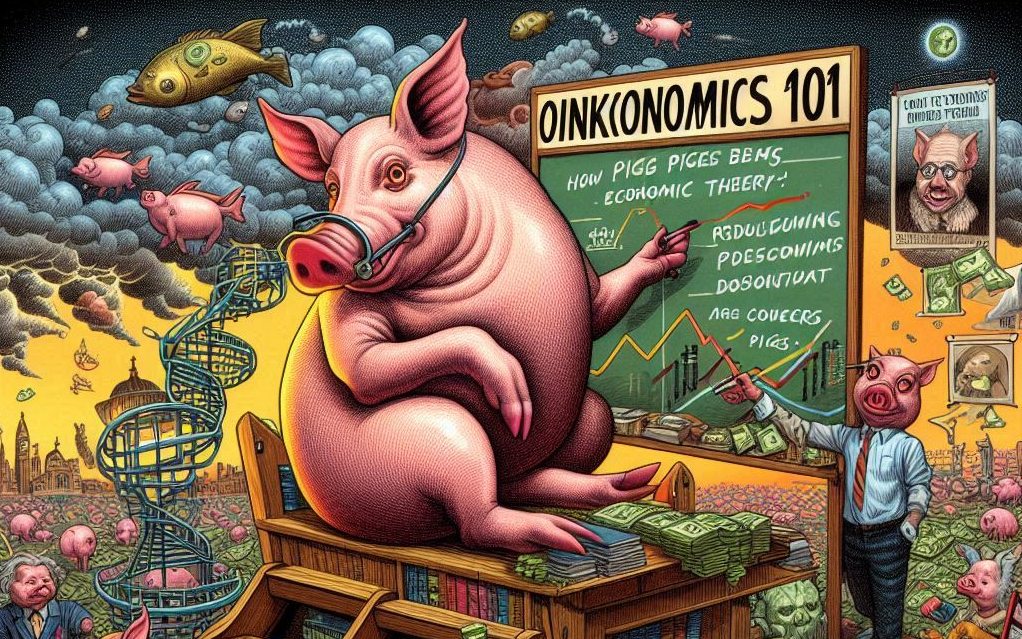
cover Oinkonomics 101 How Pigs are Revolutionizing Economic Theory 4.jpg
Oinkonomics 101: How Pigs are Revolutionizing Economic Theory
In an unexpected twist of fate, pigs have emerged as the latest economic gurus, introducing a revolutionary new theory known as Oinkonomics. This porcine approach to finance is turning heads in academic circles and pigpens alike, promising a future where the economy runs as smoothly as a pig’s belly sliding through mud.
The Basics of Oinkonomics
Oinkonomics is built on simple principles that even the most pig-headed economist can understand. At its core, it revolves around the idea that a well-fed pig is a happy pig, and a happy pig is a productive pig. The primary unit of currency in Oinkonomics is, unsurprisingly, food. Corn, apples, and slop are all valuable commodities that can be traded, hoarded, or consumed.
“Pigs have always understood the value of a full trough,” explains Professor Snoutwell, a leading expert in Oinkonomics. “Our economic system is based on the concept of ‘snout and demand.’ The more food available, the higher the pig’s sense of security and well-being.”
The Piggy Bank System
In Oinkonomics, the traditional piggy bank takes on a whole new meaning. Instead of being a ceramic figure collecting dust on a shelf, the piggy bank is a living, breathing pig that stores its wealth in the form of food. Pigs are natural savers, often hiding extra corn under hay or burying apples for later consumption.
“The piggy bank system is incredibly efficient,” says financial advisor Porky Pigstein. “Pigs don’t need complex financial instruments or banking apps. They rely on their instincts and snouts to manage their resources effectively.”
Economic Indicators in Oinkonomics
Oinkonomics uses a unique set of economic indicators to gauge the health of the economy. These indicators include the fullness of the trough, the number of mud puddles available, and the overall happiness of the pigs. A high trough index and abundant mud puddles are signs of a booming economy.
“We’ve developed the Piggy Gross Happiness (PGH) index,” says economist Hamford Swineberg. “This index measures the contentment of pigs based on their access to food and mud. A happy pig is a productive pig, and that’s the key to a successful economy.”
The Law of Snout and Demand
At the heart of Oinkonomics is the law of “snout and demand.” This principle states that the more a pig desires food, the more valuable it becomes. Unlike traditional markets where prices fluctuate based on supply and demand, Oinkonomics focuses solely on the insatiable appetite of pigs.
“Pigs have an innate understanding of value,” explains Professor Snoutwell. “If they smell an apple, that apple’s value skyrockets in their eyes. The law of snout and demand ensures that pigs always have a keen sense of what’s important—food.”
Pigs and Inflation
Inflation in Oinkonomics is a straightforward concept. It occurs when there is an oversupply of food, leading to bloated bellies and sluggish pigs. To combat inflation, pigs must increase their activity levels, usually by running from one food source to another or engaging in enthusiastic mud rolls.
“We call it ‘pigflation,’” says Porky Pigstein. “When pigs get too much food, they slow down. The solution is simple: more exercise and a balanced diet. It’s a self-regulating system that keeps pigs fit and the economy stable.”
Trickle-Down Oinkonomics
One of the more controversial aspects of Oinkonomics is the concept of trickle-down economics, or as pigs prefer to call it, trickle-down sloponomics. This theory posits that the wealth (food) should be distributed from the top (the biggest pigs) to the bottom (the smaller pigs) in the form of leftovers and scraps.
“In trickle-down sloponomics, everyone gets a share,” says economist Hamford Swineberg. “Big pigs often leave behind bits of food, which smaller pigs eagerly consume. It ensures that no pig goes hungry, promoting overall economic stability.”
Pigs’ Retirement Plans
Retirement planning in Oinkonomics is a simple affair. Pigs save up their favorite foods and create cozy nests for their golden years. The best retirement plans involve a steady supply of treats and a prime spot in the sun for leisurely naps.
“Pigs believe in living well and enjoying life,” says Professor Snoutwell. “Their retirement plans reflect this philosophy, focusing on comfort, security, and plenty of food. It’s a model that many humans could learn from.”
The Future of Oinkonomics
The principles of Oinkonomics are gaining traction beyond the barnyard. Economists and policymakers are beginning to see the value in this straightforward, food-based economic system. There are even talks of implementing Oinkonomics-inspired policies in human economies to promote happiness and well-being.
“We’re seeing a shift towards simpler, more sustainable economic models,” says Hamford Swineberg. “Oinkonomics offers a fresh perspective on wealth and value, one that prioritizes basic needs and contentment over complex financial instruments.”
Conclusion: A New Economic Era
In conclusion, Oinkonomics is revolutionizing the way we think about economics. By focusing on basic needs and happiness, pigs have created a system that is both effective and sustainable. As we look to the future, there is much we can learn from these porcine economists.
So the next time you see a pig happily munching on an apple or rolling in the mud, remember that they might just be the financial geniuses we’ve been waiting for. Oinkonomics is not just a theory—it’s a way of life, proving that sometimes, the simplest solutions are the best.
Disclaimer
This article is a human collaboration between a cowboy and a farmer. No pigs were harmed in the making of this satire, although several did enjoy extra snacks. Always consult a financial advisor before making any economic decisions based on Oinkonomics. Remember, pigs are for life, not just for financial theories.
15 Humorous Observations About Oinkonomics
- In the world of Oinkonomics, pigs believe that a full trough equals a strong economy.
- Pigs think the stock market should be measured by the number of apples in their pen.
- Pigs’ idea of a financial crisis is running out of mud to roll in.
- In Oinkonomics, the pig with the most food always wins.
- Pigs’ version of a bailout involves extra feed and a bigger mud puddle.
- Oinkonomics: where a pig’s snout is the best investment advisor.
- Pigs don’t understand inflation—they just know more food is always better.
- In Oinkonomics, saving for a rainy day means hoarding corn under the hay.
- Pigs’ economic theories revolve around the law of “snout and demand.”
- Pigs think diversification means having different types of slop in their trough.
- Oinkonomics: where the concept of wealth is as simple as a bigger pile of food.
- Pigs believe in trickle-down economics, as long as it involves food trickling down to them.
- In Oinkonomics, the best retirement plan is a never-ending supply of treats.
- Pigs’ idea of compound interest is getting more food every time they squeal.
- Oinkonomics: proving that pigs are natural-born economists, as long as it involves food.
Types of Pig and Farmer Interactions
Piggy Banks, Pigs, Hogs, Swine, Truffle hunting, Oinkonomics, Porkfolio management, Truffle pigs, Pig breeds, Berkshire, Duroc, Hampshire, Yorkshire, Hog farming, Pig husbandry, Mud-rolling pigs, Feed-to-weight conversion, Pig care, Pig pen setup.




Originally posted 2012-09-27 02:17:16.
Originally Published at FarmerCowboy.com
2024-10-03 13:22:38
Karl Hoffman is a distinguished agriculturalist with over four decades of experience in sustainable farming practices. He holds a Ph.D. in Agronomy from Cornell University and has made significant contributions as a professor at Iowa State University. Hoffman’s groundbreaking research on integrated pest management and soil health has revolutionized modern agriculture. As a respected farm journalist, his column “Field Notes with Karl Hoffman” and his blog “The Modern Farmer” provide insightful, practical advice to a global audience. Hoffman’s work with the USDA and the United Nations FAO has enhanced food security worldwide. His awards include the USDA’s Distinguished Service Award and the World Food Prize, reflecting his profound impact on agriculture and sustainability.

